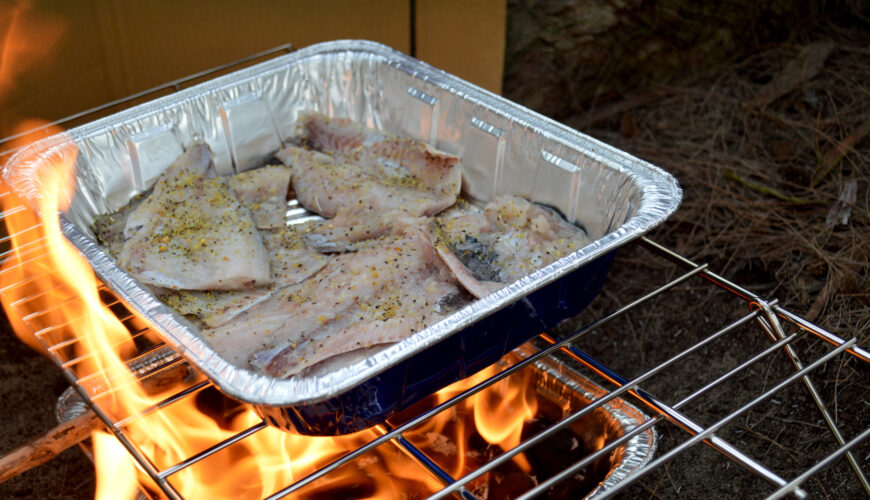Tactics
National Deer Association’s 5 Top Tips for Late-Season Deer Hunting
December 17, 2025 •iSportsman Staff
September 19, 2024
Knowing how to properly clean fish is a crucial skill for any angler, whether you’re a seasoned pro or trying your luck at fishing for the first time. A little practice and will make sure your catch is ready to cook. Here’s a step-by-step guide to cleaning your fish so you can enjoy the best meal possible.
Make sure you always establish a blood circle anytime you are using a knife (or any other sharp object for that matter): hold your knife safely by the blade, extend the handle out and slowly swing your arm around you in a complete circle. Everyone in this range is at risk of injury, so make sure they’re at a safe distance before starting.
As soon as you’ve caught your fish, it’s important to bleed it for the best flavor. Make a shallow cut just behind the gills and let the blood drain out. Then, rinse the fish thoroughly in fresh water. This initial step provides the fish a cleaner, fresher taste once you cook it.
Most freshwater and saltwater fish need to be scaled before you can cook them, unless you’re planning to skin them. Hold the fish by the tail and, using the back of your fillet knife, scrape from the tail toward the head. This motion will remove the scales. Be sure to work carefully to get them all, especially around the fins and belly.
After scaling, the next step is gutting. Insert your knife at the fish’s vent (the small hole on the underside of the fish) and make a cut up towards the head, being careful not to puncture the intestines. Open the body cavity and remove the guts by pulling them out with your hands or using the knife for assistance. Be thorough — leftover innards can affect the taste.
Some anglers like to remove the head for cooking, while others prefer to leave it intact for certain recipes. If you choose to remove it, simply make a cut just behind the gills on both sides and slice through the spine. Then, pull the head away from the body.
Once gutted, clean the inside of the fish thoroughly by rinsing it under cold running water. You’ll notice a dark line along the backbone, which is the kidney — scrape this out with the tip of your knife to ensure the fish is completely clean. This step is important for taste and presentation.
If you’re like me and prefer fillets rather than cooking the fish whole, lay the fish on its side and make an incision just behind the gills, cutting down until you hit the backbone. Then turn your knife flat and slice along the backbone all the way to the tail, keeping the blade as close to the bone as possible to maximize the meat. After that, flip the fish and repeat on the other side. Finally, you can skin the fillets by holding the tail end of the fillet and carefully cutting between the meat and skin.
Once you’ve finished cleaning your fish, dispose of the waste responsibly. This can mean burying it away from water sources or putting it in a sealed container for disposal. Remember, keeping your fishing spot clean ensures the area remains healthy and enjoyable for everyone.
Whether you’re grilling, frying, or baking, a well-cleaned fish makes all the difference. It improves the flavor while also enhancing the experience of catching your own meal. Now that you know how to clean fish, you’re ready to savor every bite of your next catch!
